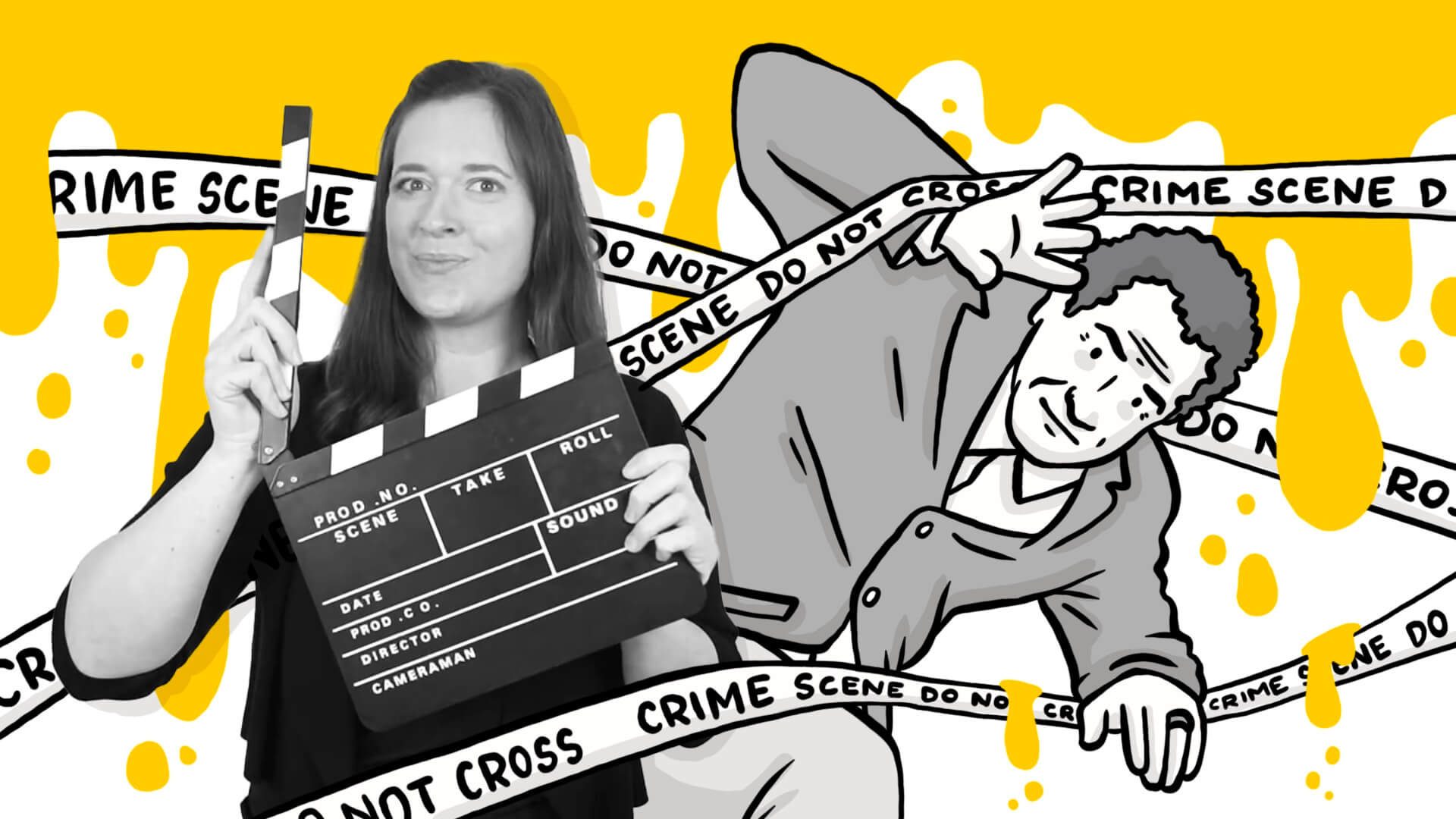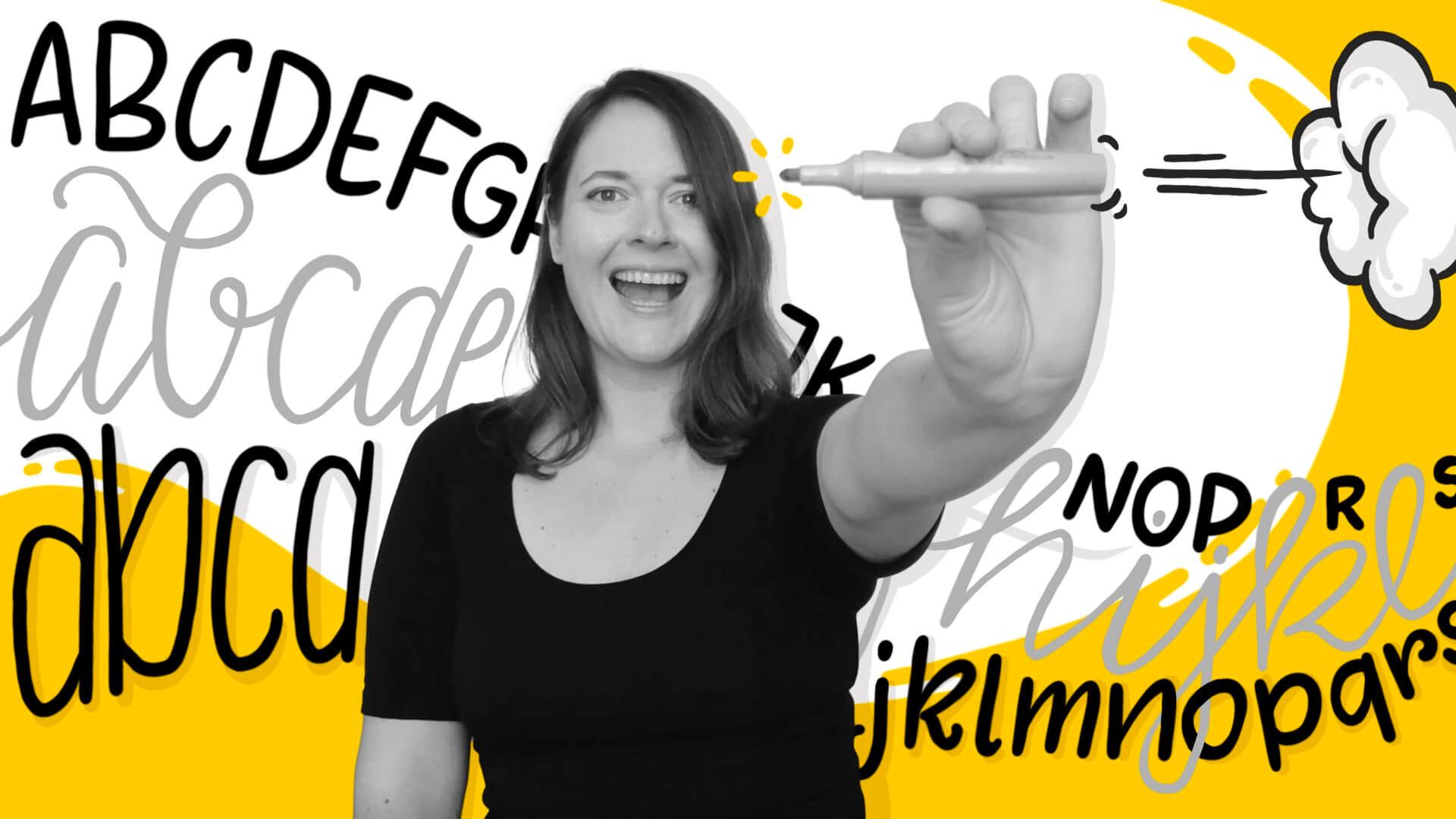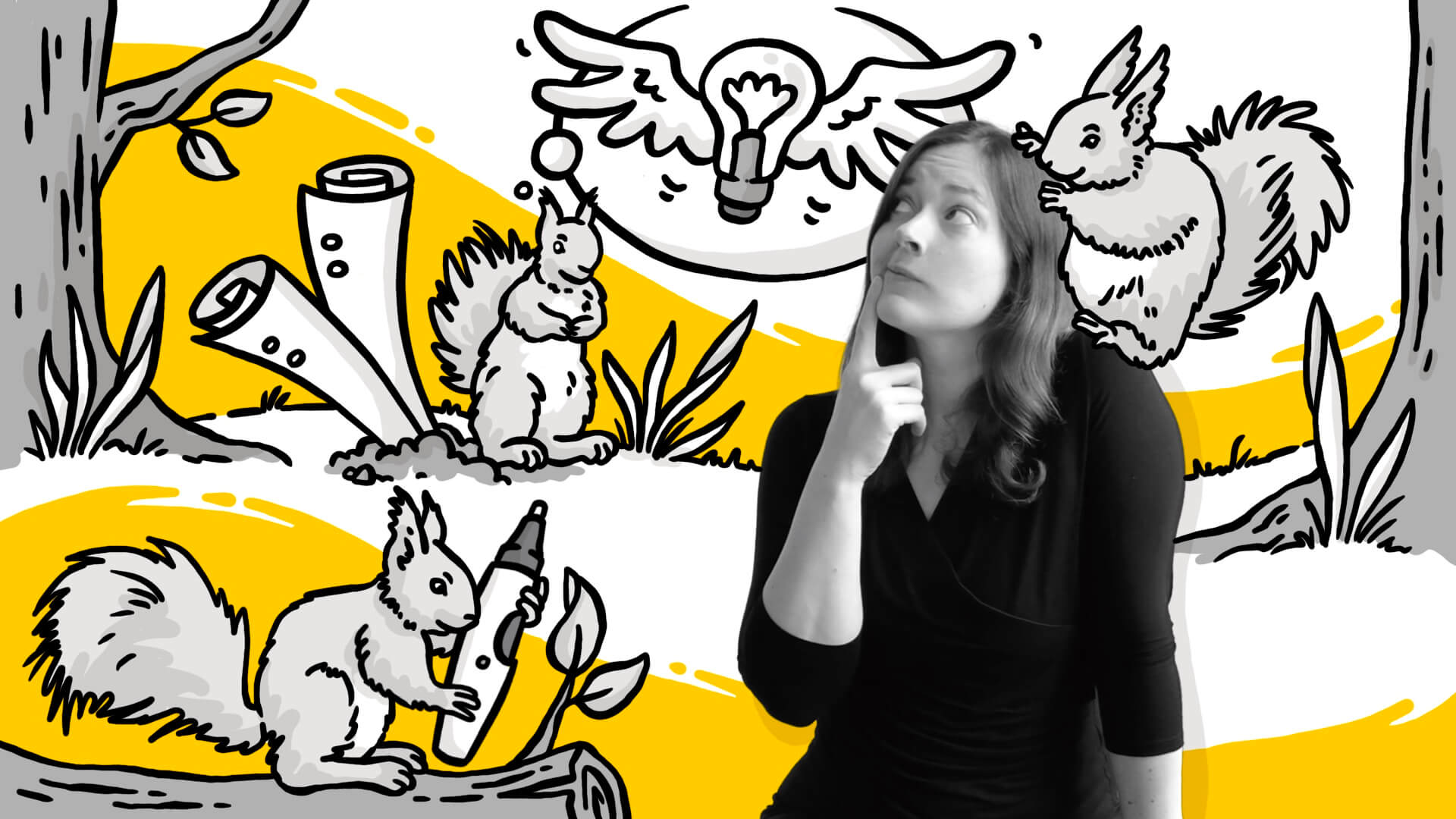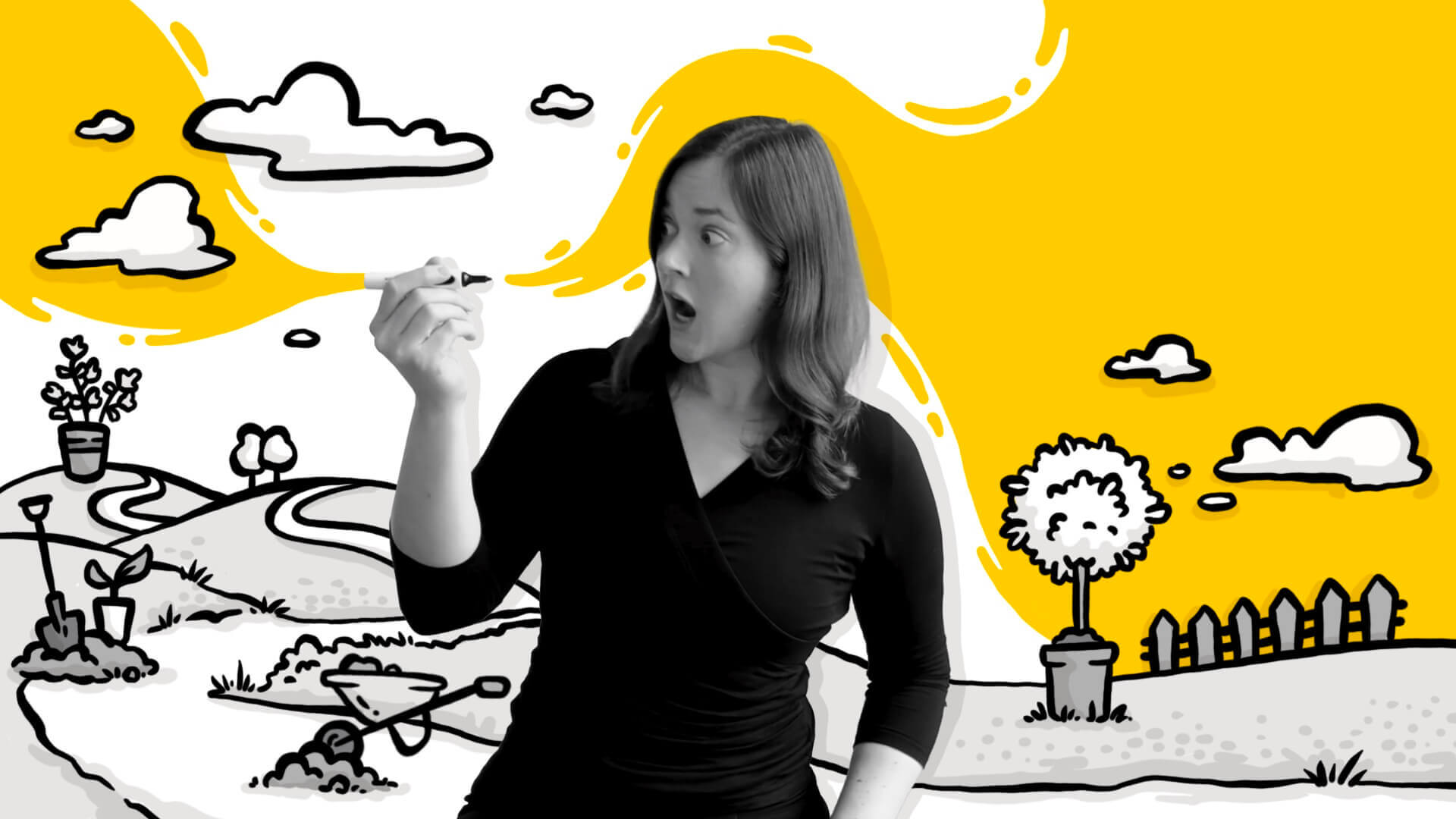Neuroses, Murders, and Humor
In the last few weeks, I have watched some episodes of Mr. Monk. And when I say some, I mean all of them. Yes, really all eight seasons. Why am I telling you this? This series is a true masterpiece of storytelling.
Behind the quirky neuroses of the brilliant detective Adrian Monk lie profound lessons that teach us not only how to build an exciting crime story but also how to convey a whole world of conflicts and developments in just a few acts. And we can apply these lessons not only to crime stories but also to convey professional content in an entertaining way – for example, in comics or presentations that aim to make research findings or corporate analyses understandable.
The creators of Mr. Monk have perfected a brilliant and simple storytelling pattern: Setup, Conflict, Resolution. It is a structure that works wonderfully for telling any story. Let’s take a look together at what we can learn from two of my favorite episodes for our own storytelling.
A Criminal Case in Three Acts
1. Setup: seemingly unsolvable problems
The starting situation in every Monk episode is clear: an inexplicable crime. And of course, Monk is the only person who can solve the problem – even though his own neuroses get in the way.
Take the episode “Mr. Monk and the Kid” (Season 3, Episode 16). A two-year-old boy, Tommy, is found with a severed human finger in his hand. Monk and his assistant Natalie are called in to find out where the finger came from and who the person it belongs to is. Contrary to expectations, Monk immediately develops a deep affection for the boy and even offers to take him in for two weeks – which is already an incredible setup, as we know Monk is a hygiene fanatic who will struggle to cope with a chaotic toddler.
In “Mr. Monk and the Garbage Strike” (Season 5, Episode 2), Monk is confronted with his ultimate nightmare: a garbage strike causes trash to pile up on the streets of San Francisco. Monk, who abhors any mess, is completely thrown off balance. When the union leader is found dead and the case looks like a suicide, Monk is tasked with investigating the death. However, the smell and chaos of the garbage overwhelm him, and the setup leads us directly into the conflict of the episode.
What do we learn from this? A strong setup is a must. It should clearly outline the central problem. This immediately adds tension to your story and captivates the readers. Whether you’re preparing a presentation or translating professional content into images: get to the point of the problem.
2. Conflict: internal and external obstacles
In the second act, the tension increases. Monk is a brilliant detective, but his personal fears and neuroses often get in his way. Here we see the true art of storytelling in Monk: the protagonist’s internal conflict is just as important as the external case he must solve.
In “Mr. Monk and the Kid,” we see Monk trying to deal with the inevitable “impurities” of a toddler. There is an incredibly funny scene where Monk calls an emergency number because Tommy has created chaos – an action that shows how much Monk struggles with disorder. But the real conflict arises from Monk slowly developing a deep emotional bond with Tommy, even though the boy starts to adopt Monk’s behavior patterns and becomes more like him – which ultimately leads Monk to the realization that he cannot provide the boy with the life he deserves.
In “Mr. Monk and the Garbage Strike,” the external conflict – the unexplained cause of death of the union leader – is so severely hindered by Monk’s own fear of garbage that he cannot think clearly. In a desperate turn, he even lies and claims it was a suicide just to quickly end the strike. This leads to a moral dilemma and a conflict between Monk and Natalie, who is contemplating leaving him because he is abandoning his principles. Monk can only solve the case when he is brought to a clean environment and can think clearly again – a funny yet profound look at how his neuroses constantly sabotage him.
What do we learn from this? The conflict must operate on multiple levels. Not only is the external plot – like the murder – important, but also the internal struggle of the character. When telling a story, whether long or short, the middle part should build the tension arc by clearly defining the challenge and forcing the hero to confront his internal problem.
3. Resolution: actions instead of words
At the end of each Monk episode, there is not only a resolution to the case but also a change in Monk himself. The special thing about it: this development is often shown through actions, not dialogues. Monk overcomes his fears – at least partially – through a small but significant gesture.
In “Mr. Monk and the Kid,” Monk reaches the painful realization at the end that he cannot adopt Tommy, even though he loves him. Instead, he decides to leave the boy with a family that can offer him a more stable and less complicated life. This quiet gesture of letting the boy go shows us how much Monk has developed. His willingness to invest emotionally and then do what is best for Tommy is a subtle but powerful development.
In “Mr. Monk and the Garbage Strike,” on the other hand, Monk solves the case after he exposes the mayor as the culprit. The resolution comes in typical Monk fashion: after finally finding a clean place to think, everything becomes clear to him. To secure the crucial evidence, Mr. Monk even chases after a garbage truck and retrieves the trash bags from the back of the trailer. Nothing that one would have expected from Mr. Monk at the beginning of the episode.
What do we learn from this? The change in your hero should become visible at the end – preferably through actions, not dialogues. In comics, this might mean having the character do something in the last panel that they would never have done in the first panel.
Practice Transfer
Supporting Characters and Humorous Endings
Another hallmark of Monk is the supporting characters, who often provide humorous scenes, especially towards the end of each episode.
In “Mr. Monk goes to a Rock Concert” (Season 5, Episode 8), we see Captain Stottlemeyer in the last scene with his son in the photo booth, taking a picture together (the episode began by showing that father and son are strangers). At first, both look serious - “click” first photo - but then Lieutenant Disher jumps into the photo booth from the side, makes a face - “click” second photo - and in the last picture, we see father and son laughing - “click”.
In the last scene of “Mr. Monk stays in Bed” (Season 4, Episode 3), we see Natalie and Mr. Monk sitting on the steps in front of the entrance door to Mr. Monk’s house. Natalie asks, “What are you doing out here? You hate being outside.” He replies, “Maybe I’ve changed.” Natalie looks skeptical, “Seriously, what are you doing out here?” - before the credits roll, we see a “Get Well Soon” card in Mr. Monk’s apartment playing a song - that same card that Natalie’s daughter showed Mr. Monk at the beginning of the episode (he had the flu) and which he wanted to throw away because he found the music unbearable. In the end, he no longer wants to part with it because, surprisingly, the card helped him solve the case.
What do we learn from this? Supporting characters can be wonderfully used to lighten complex or serious stories. By giving them their own little storylines that often end in humorous scenes, you can emotionally balance your narrative. Leave a smile.
What Mr. Monk Teaches Us About Presentations, Explainer Videos, and Comics
What do I take away from my Monk marathon? The series masterfully shows us how to tell a story in three clear acts: Setup, Conflict, Resolution. This structure is perfect for comics, especially when you want to illustrate complex topics like research findings or corporate content in just three panels.
In the first panel, you establish the problem or the setting (like the mysterious murder in every Monk episode). The second panel shows the conflict, which arises either from external circumstances or internal obstacles (like Monk struggling with his neuroses). In the third panel, the resolution comes, presenting a surprising insight or solution – and the protagonist’s actions speak for themselves without needing explicit explanation.
What do we learn from this? Whether for science or business – this clear tripartite structure makes it easy to pack complicated issues into an understandable and impactful story. And the humorous twist at the end? It ensures that even dry topics can end with a smile.
What is also not a disadvantage: Now I have a well-founded excuse to occasionally dive back into old favorite series – all in the name of “storytelling research.” After all, you can never learn enough about good storytelling, right?





